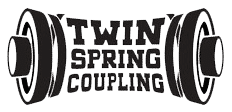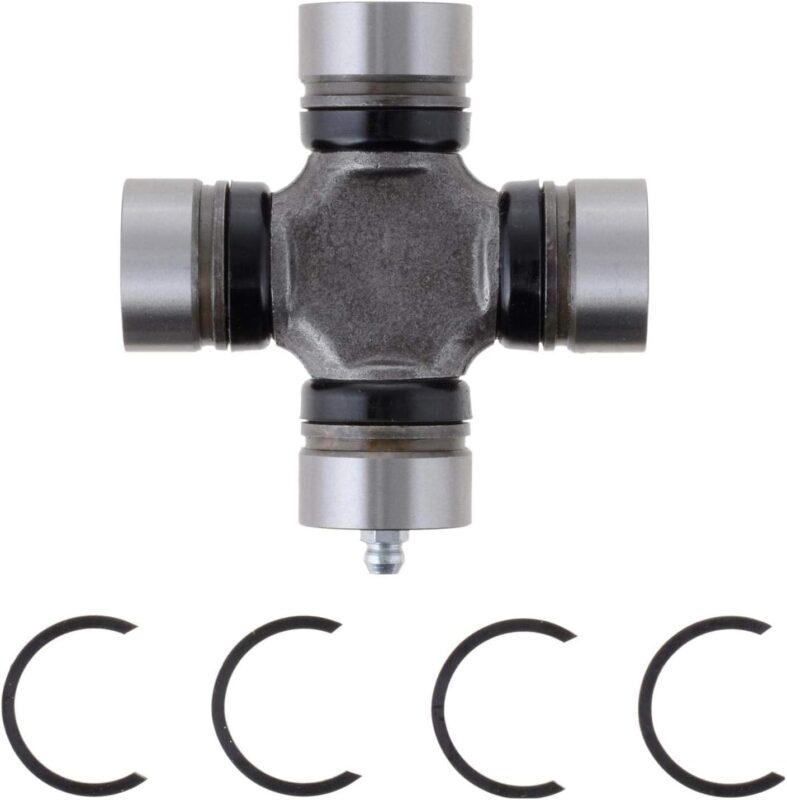Universal Joints – Vital for Automotives, Farming and mining
Table of Contents
Universal joint couplings are a crucial component in many mechanical systems. They allow the transfer of torque and rotational movement between two shafts that are not in line with each other. Universal joint couplings come in a variety of designs and are made from different materials. In this article, we will explore the advantages and disadvantages of universal joint couplings, the different types available, the materials used, and the top manufacturers by market share.
Advantages of Universal Joints
One of the biggest advantages of universal joint couplings is their ability to transfer rotational movement between two shafts that are not in line with each other. This means that they can be used in a wide variety of mechanical systems where there is a need to transfer torque or rotational movement between two shafts that are at an angle to each other.
Another advantage of universal joint couplings is their ability to compensate for misalignment between two shafts. In some mechanical systems, the shafts may not be perfectly aligned due to manufacturing tolerances or wear and tear over time. Universal joint couplings can compensate for this misalignment and still allow for the transfer of torque and rotational movement.
Universal joint couplings are also relatively simple in design and easy to install. They can be used in a wide variety of applications, from small household appliances to large industrial machinery. This versatility makes them a popular choice for engineers and designers.
Disadvantages of Universal Joints
One of the main disadvantages of universal joint couplings is their limited range of motion. While they can compensate for some misalignment between two shafts, they are not designed to handle large angles or extreme misalignment. In some cases, other types of couplings may be necessary to handle these situations.
Another disadvantage of universal joint couplings is their susceptibility to wear and tear over time. As the coupling rotates, it can cause friction between the moving parts, leading to wear and eventual failure. Regular maintenance and lubrication can help prolong the life of the coupling, but eventually, it will need to be replaced.
Types of Universal Joint Couplings
There are several different types of universal joint couplings, each with its own advantages and disadvantages. The most common types include:
- Single Universal Joint Couplings: This is the most basic type of universal joint coupling. It consists of two yokes and a cross-shaped component that connects them. The yokes are attached to the shafts that need to be connected, and the cross component allows for the transfer of torque and rotational movement between them. This type of coupling is simple and easy to install but may not be suitable for applications with high torque or extreme misalignment.
- Double Universal Joint Couplings: This type of coupling consists of two single universal joints connected by an intermediate shaft. It is designed to handle higher torque loads and more extreme misalignment than a single universal joint coupling. However, it is also more complex in design and more difficult to install.
- Flex Couplings: Flex couplings are designed to compensate for misalignment between two shafts while also dampening vibrations and shock loads. They consist of two flanges connected by a flexible element such as rubber or a spring. This type of coupling is commonly used in automotive and marine applications.
- Constant Velocity Joints: Constant velocity joints (CV joints) are designed to transfer torque and rotational movement at a constant speed regardless of the angle between the two shafts. They are commonly used in front-wheel-drive vehicles and other applications where there is a need to transfer torque at an angle.
Materials Used in Universal Joint Couplings
Universal joint couplings are made from a variety of materials, including:
- Steel: Steel is a common material for universal joint couplings due to its strength and durability. However, steel couplings can be heavy and may not be suitable for applications where
weight is a concern.
- Aluminum: Aluminum is a lighter weight option for universal joint couplings. It is also corrosion-resistant, which makes it a good choice for applications in harsh environments. However, aluminum couplings may not be as strong as steel couplings and may not be suitable for high torque applications.
- Brass: Brass is a corrosion-resistant material that is commonly used in marine applications. It is also relatively easy to machine, which makes it a good choice for custom applications. However, brass couplings may not be as strong as steel or aluminum couplings and may not be suitable for high torque applications.
- Composite Materials: Composite materials such as carbon fiber are lightweight and strong, making them a good choice for high-performance applications. However, they may be more expensive than other materials and may not be suitable for all applications.
Top Universal Joint Coupling Manufacturers
There are several manufacturers of universal joint couplings, each with its own market share. The top five manufacturers by market share are:
- Dana Incorporated: Dana is a global leader in the design and manufacture of drivetrain components, including universal joint couplings. They offer a wide range of couplings for automotive, commercial, and industrial applications.
- SKF: SKF is a global supplier of bearings, seals, and related products, including universal joint couplings. They offer a variety of couplings for industrial applications, including high-performance options for demanding environments.
- GKN Automotive: GKN Automotive is a global supplier of driveline components, including universal joint couplings. They offer a variety of couplings for automotive and industrial applications, including high-performance options for off-road and motorsport applications.
- American Axle & Manufacturing: American Axle & Manufacturing is a global supplier of driveline and drivetrain components, including universal joint couplings. They offer a variety of couplings for automotive and commercial applications, including heavy-duty options for trucks and other vehicles.
- NTN Corporation: NTN Corporation is a global supplier of bearings and related products, including universal joint couplings. They offer a variety of couplings for industrial applications, including high-performance options for demanding environments.
Conclusion
Universal joint couplings are a critical component in many mechanical systems. They allow for the transfer of torque and rotational movement between two shafts that are not in line with each other. While they offer several advantages, including their ability to compensate for misalignment and their versatility, they also have some disadvantages, including their limited range of motion and susceptibility to wear and tear over time.
There are several different types of universal joint couplings, each with its own advantages and disadvantages. The most common types include single universal joint couplings, double universal joint couplings, flex couplings, and constant velocity joints.
Universal joint couplings are made from a variety of materials, including steel, aluminum, brass, and composite materials. The choice of material will depend on the specific application and its requirements.
The top manufacturers of universal joint couplings include Dana Incorporated, SKF, GKN Automotive, American Axle & Manufacturing, and NTN Corporation. These companies offer a wide range of couplings for automotive, commercial, and industrial applications.
In conclusion, universal joint couplings are a critical component in many mechanical systems, and their use will continue to be essential in the years to come.
https://twinspringcoupling.com/spicer-5-153x-u-joint-kit-1310-series/

